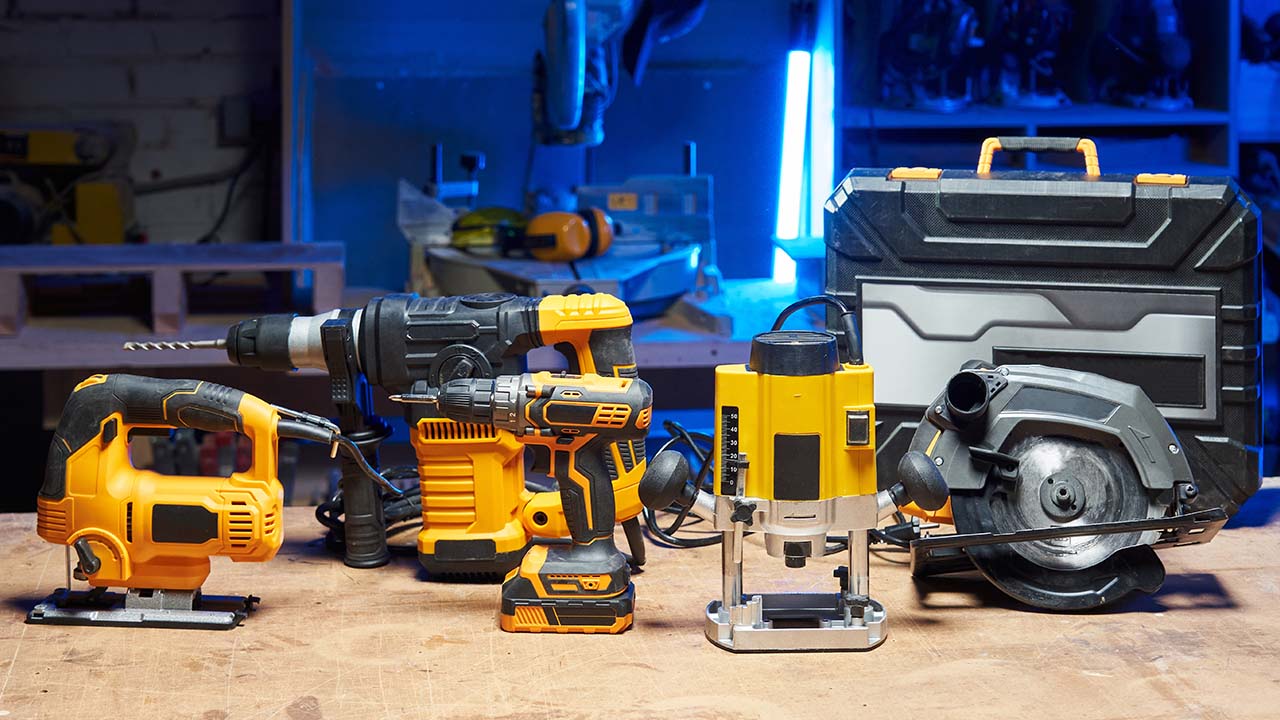
The power tool industry has seen remarkable growth over the last few decades, fueled by relentless innovation and evolving consumer needs. In 2024, this growth shows no signs of slowing down, with manufacturers striving to meet the increasing demand for efficiency, precision, and sustainability. As homeowners, hobbyists, and professionals continue to rely on power tools for a variety of tasks, the industry's latest advancements are reshaping how we interact with these indispensable devices. From smart technologies to eco-conscious designs, here’s a detailed look at the revolutionary changes defining the modern power tool set in 2024.
Smart technology has made its way into almost every industry, and power tools are no exception. In 2024, we see tools leveraging IoT (Internet of Things) for better usability and performance.
Real-time monitoring and diagnostics: IoT-enabled tools now allow users to monitor tool performance and diagnose issues remotely, often through a smartphone app.
App-based control and customization: Many tools are equipped with Bluetooth and Wi-Fi, enabling users to adjust settings, schedule maintenance alerts, or even lock and unlock tools for security purposes.
AI-driven safety features: Artificial intelligence plays a critical role in improving user safety. For example, smart tools now feature automatic shut-off systems to prevent damage or injury during misuse, such as overloading or overheating.
These innovations bring a new level of intelligence and convenience to the toolbox, making workflows smoother and safer.
Power tools are becoming more energy-efficient and powerful, thanks to significant advancements in battery technology.
Innovations in lithium-ion and solid-state batteries: Solid-state batteries, which have a better energy density, a longer lifespan, and are safer, are beginning to supplant conventional lithium-ion batteries.
Longer lifespan and faster charging: Thanks to advancements in charging technology, batteries may reach 80% charge in less than 15 minutes, enabling uninterrupted work hours.
Universal battery systems: Leading brands are adopting interoperable battery designs, meaning a single battery pack can power multiple tools across different brands. This innovation reduces clutter and provides greater flexibility for users.
The shift toward better batteries reflects the industry's commitment to cordless convenience without compromising on power.
As power tools become more advanced, manufacturers are also focusing on making them more user-friendly.
Lightweight materials: The use of carbon fiber and lightweight alloys has made power tools easier to handle, particularly for prolonged tasks.
Ergonomic enhancements: Redesigned grips and handles minimize strain on the user, reducing fatigue and improving precision.
Compact yet powerful models: Despite being smaller in size, these tools pack more power than ever before, making them ideal for tight spaces and portable use.
Such designs are a testament to the industry's dedication to improving usability and comfort.
Recycled materials: Tool makers are lessening their environmental impact by using more recyclable and environmentally friendly materials.
Energy-efficient tools: Innovations have led to tools that consume less energy while delivering superior performance.
Repairable and modular designs: By introducing modular systems, manufacturers are encouraging users to repair rather than replace, extending the lifespan of their tools and reducing waste.
Precision and versatility are at the forefront of cutting and drilling innovations in 2024.
Laser-guided tools: Tools equipped with laser guides ensure pinpoint accuracy, even for the most complex tasks.
Sensor-driven performance: Advanced sensors detect material properties and automatically adjust speed and torque for optimal performance.
Hybrid tools: Multi-functional tools, such as those combining cutting, drilling, and grinding capabilities, offer unmatched versatility for professionals and DIY enthusiasts alike.
These advancements empower users to tackle more intricate projects with ease and confidence.
For professionals who use power tools daily, noise and vibration are significant concerns. In 2024, manufacturers have made strides in mitigating these issues.
Insulation and damping technologies: Tools are now designed with enhanced insulation to reduce noise levels, making them suitable for use in noise-sensitive environments.
Vibration-minimizing designs: Special mechanisms are incorporated to dampen vibrations, reducing user fatigue and enhancing precision.
These features contribute to a more comfortable and efficient user experience.
The competitive landscape of the power tool market continues to evolve, with new players challenging established brands.
Emerging brands: Startups are introducing cutting-edge innovations, often at competitive price points, giving traditional players a run for their money.
Established leaders: Industry giants are doubling down on R&D, launching sophisticated product lines to maintain their dominance.
This competition benefits consumers, who now have access to a broader range of high-quality tools at various price points.
The power tool market is influenced by shifting trends and the changing demands of its consumer base.
Cordless revolution: Cordless tool sets are now the standard, providing unmatched flexibility and convenience.
Rise of DIY culture: The growing popularity of DIY projects has spurred demand for user-friendly tools designed for hobbyists and small-scale users.
Subscription-based models: To cater to long-term users, brands are offering subscription services for tool maintenance, upgrades, and even rentals.
These trends reflect the diverse and dynamic nature of the power tool industry in 2024.
The power tool market in 2024 is defined by groundbreaking advancements that enhance efficiency, precision, and sustainability. From AI-powered safety features and solid-state batteries to lightweight designs and eco-friendly manufacturing, the industry is addressing both professional and consumer needs with innovation at its core.
Looking ahead, the future of power tools will likely be shaped by further integration of smart technologies, greater sustainability efforts, and a deeper understanding of user needs. As tools become smarter, more durable, and more accessible, they’ll continue to revolutionize industries and hobbies alike.